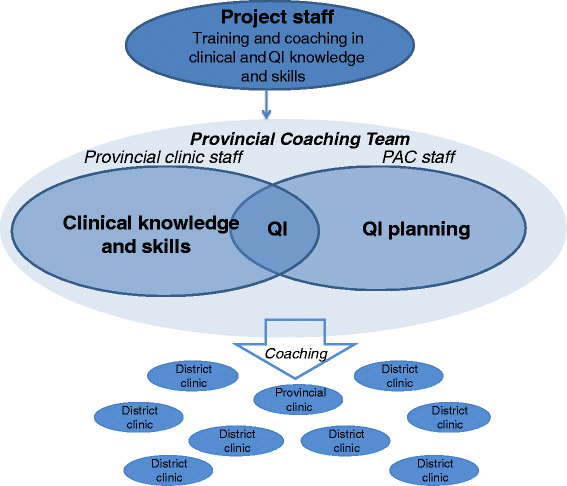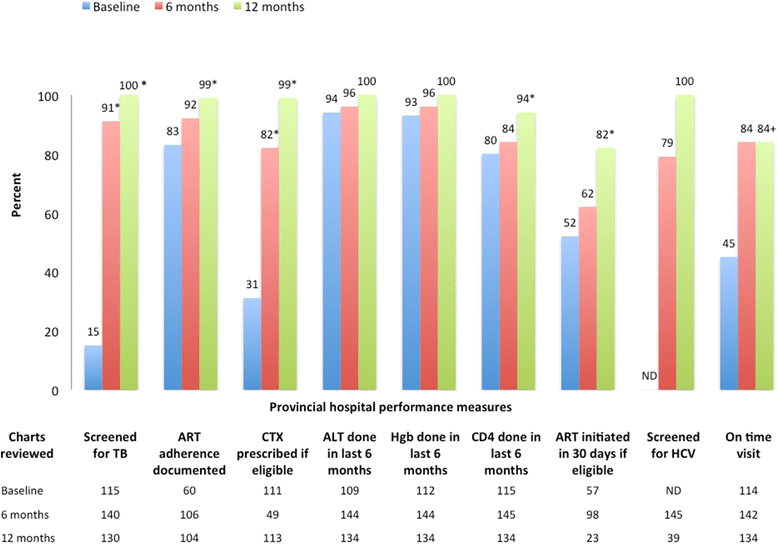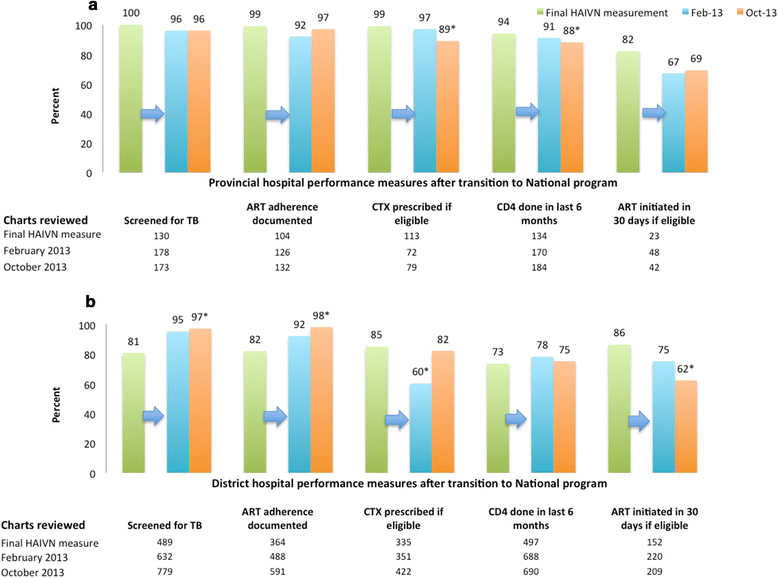Integrated clinical and quality improvement coaching in Son La Province, Vietnam: a model of building public sector capacity for sustainable HIV care delivery
- PMID: 26184505
- PMCID: PMC4504451
- DOI: 10.1186/s12913-015-0935-8
Integrated clinical and quality improvement coaching in Son La Province, Vietnam: a model of building public sector capacity for sustainable HIV care delivery
Abstract
Background: The global scale-up of antiretroviral therapy included extensive training and onsite support to build the capacity of HIV health care workers. However, traditional efforts aimed at strengthening knowledge and skills often are not successful at improving gaps in the key health systems required for sustaining high quality care.
Methods: We trained and mentored existing staff of the Son La provincial health department and provincial HIV clinic to work as a provincial coaching team (PCT) to provide integrated coaching in clinical HIV skills and quality improvement (QI) to the HIV clinics in the province. Nine core indicators were measured through chart extraction by clinic and provincial staff at baseline and at 6 month intervals thereafter. Coaching from the team to each of the clinics, in both QI and clinical skills, was guided by results of performance measurements, gap analyses, and resulting QI plans.
Results: After 18 months, the PCT had successfully spread QI activities, and was independently providing regular coaching to the provincial general hospital clinic and six of the eight district clinics in the province. The frequency and type of coaching was determined by performance measurement results. Clinics completed a mean of five QI projects. Quality of HIV care was improved throughout all clinics with significant increases in seven of the indicators. Overall both the PCT activities and clinic performance were sustained after integration of the model into the Vietnam National QI Program.
Conclusions: We successfully built capacity of a team of public sector health care workers to provide integrated coaching in both clinical skills and QI across a province. The PCT is a feasible and effective model to spread and sustain quality activities and improve HIV care services in a decentralized rural setting.
Figures




References
-
- Global update on HIV treatment 2013: results, impact and opportunities: WHO report in partnership with UNICEF and UNAIDS. [http://www.unaids.org/en/resources/documents/2013/20130630_treatment_report]. Accessed 4 July 2015.
-
- Bussmann C, Rotz P, Ndwapi N, Baxter D, Bussmann H, Wester CW, Ncube P, Avalos A, Mine M, Mabe E, et al. Strengthening healthcare capacity through a responsive, country-specific, training standard: the KITSO AIDS training program's support of Botswana's national antiretroviral therapy rollout. Open AIDS J. 2008;2:10–16. doi: 10.2174/1874613600802010010. - DOI - PMC - PubMed
-
- Toro PL, Rabkin M, Flam R, El-Sadr W, Donahue M, Chadwick E, Abrams EJ. Training multidisciplinary teams to deliver high-quality HIV care to families in resource-limited settings: the MTCT-Plus initiative experience. J Assoc Nurses AIDS Care. 2012;23(6):548–554. doi: 10.1016/j.jana.2011.12.007. - DOI - PubMed
Publication types
MeSH terms
Substances
Grants and funding
LinkOut - more resources
Full Text Sources
Other Literature Sources
Medical
Miscellaneous

